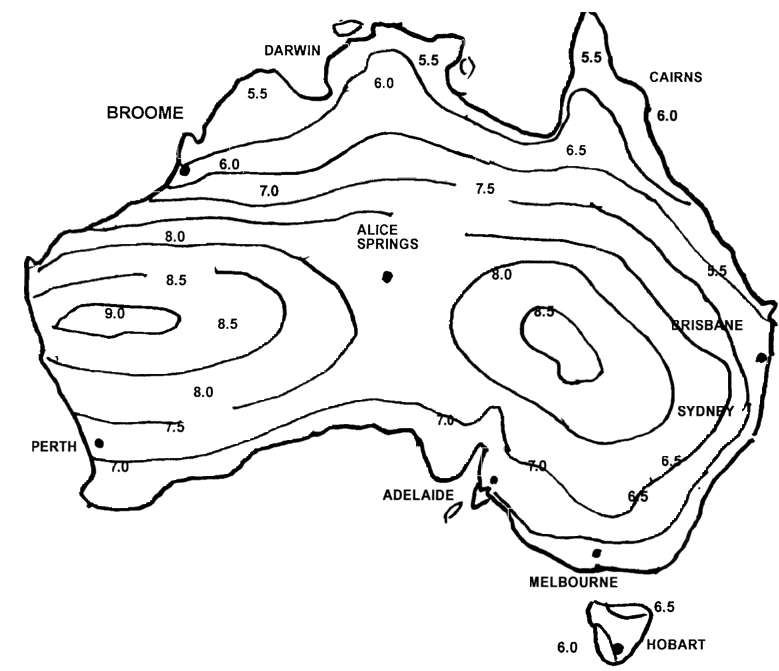Solar Basics You Need to Know
Solar basics you need to know to ensure your solar works first time. This article by Solar Books’ Collyn Rivers explains all.


Solar Basics You Need to Know – is there enough sun?
Generalising, solar is feasible in most parts of the world between latitudes +/- 50 degrees. Solar input is typically quoted in PSH (Peak Sun Hours) per day. Google PSH and your closest town for the answer or contact your local met office.

Pic: In the above map PSH is the same thing as ‘Daily sum’. Pic: solargis.
In most areas, PSH varies with time of year. You need at least 2.5 PSH/day, but 3.0 PSH is preferable. The minimum PSH determines the solar module capacity required. You then check there is non-shadowed space for that capacity.
The solar modules should face more or less north (in the southern hemisphere) and more or less south (in the northern hemisphere). For optimum year-round input, they tilt them at (your) latitude angle. To increase winter input tilt them more upright. Or less steeply for summer. Between 0 and 20 degrees north or south of the equator they can be more or less horizontal year-round.
Solar Basics You Need to Know – how much solar capacity do I need?
Most solar suppliers check your current usage – or use locally known averages. This, to put mildly, is not the way to go.
Your first step is to minimise usage. This is simple and easy, but you need to know how. Over a third of our book Solar Success devoted to just this. It shows how to (typically) slash usage by at least one third. Half is readily possible. Doing so will save you thousands of dollars in solar and (particularly) ongoing battery costs.
From there, you design the system to provide whatever percentage of the energy needed. It is possible to have 100% but settling for 95% will halve the cost!
Solar Basics You Need to Know – battery and generator back-up
Stand-alone solar systems typically have battery storage for two to three days of zero solar input. A generator and a large battery charger then recharge the system. Battery storage is however costly. It can be reduced if the generator is used more often.
Solar Basics You Need to Know – ongoing maintenance
Apart from cleaning the solar modules if they get dusty or muddy – they need no other attention. Do not get scammed into signing a yearly maintenance contract. Their useful life-span is 25-30 years. See our article Top Ten Solar Scams.:
The AGM or LIFePO4 batteries now used are usually maintenance free. Battery lifespan is typically 12-16 years. They may last longer but their capacity will be about 20% less than when new.
Solar Basics You Need to Know – can I build the system myself?
Many do but it does need some electrical experience. Unless you have, Solar Books advises seeking assistance. Much of the work, however, is mechanical. Framework for solar arrays is readily buyable. Huge savings can be made by constructing these yourself but you must allow for wind forces etc. Solar Success, however, shows that required. (It was built to withstand cyclones but is still far cheaper than standard commercial equivalents).
We strongly advise buying Solar That Really Works! (for boats, cabins and RVs). Buy Solar Success for homes and properties. Our book Caravan & Motorhome Electrics covers every aspect of that topic. Their content is globally valid.
All our books are now available in digital and print format. The digital books can be bought and downloaded right now from the Bookshop on this site. Click on the book title (above) to order, Our print versions can be ordered from any bookshop in Australia and New Zealand – or via email directly from booktopia.com.au




